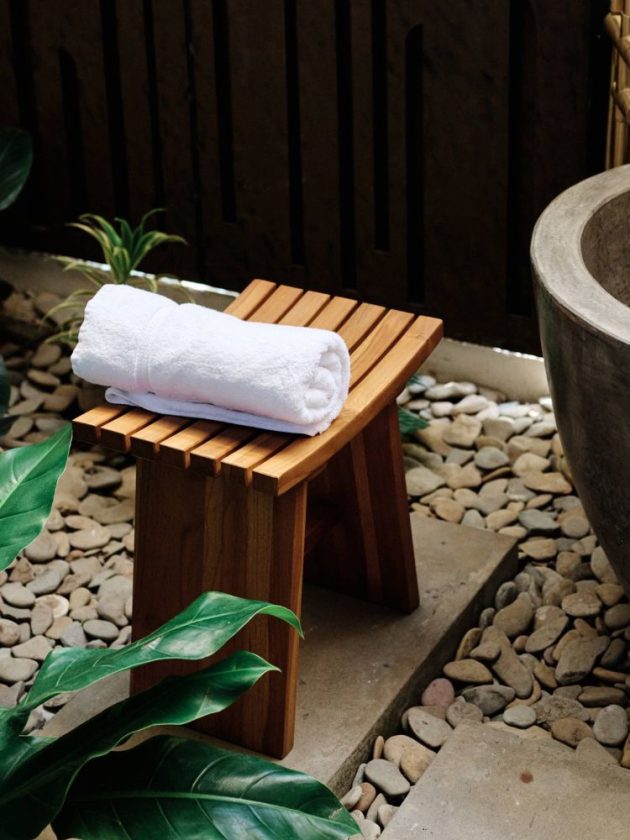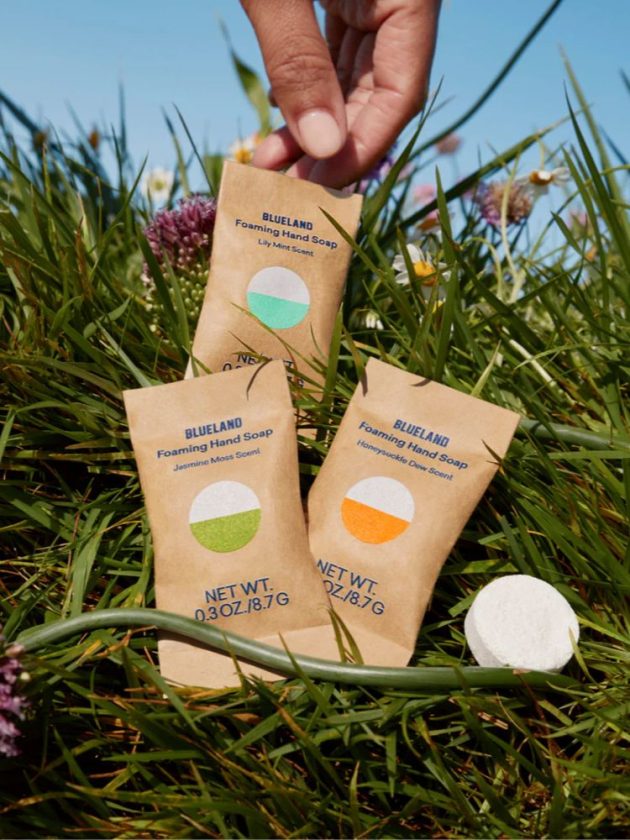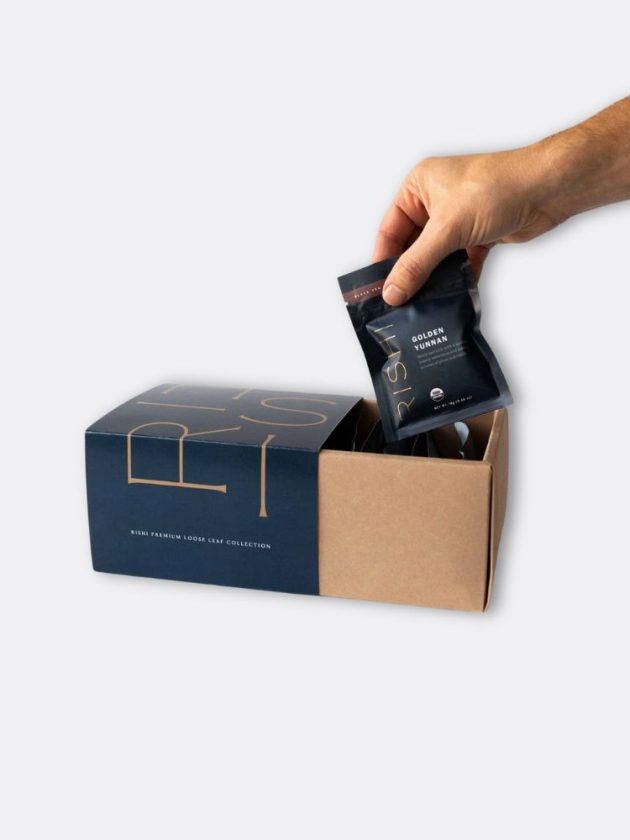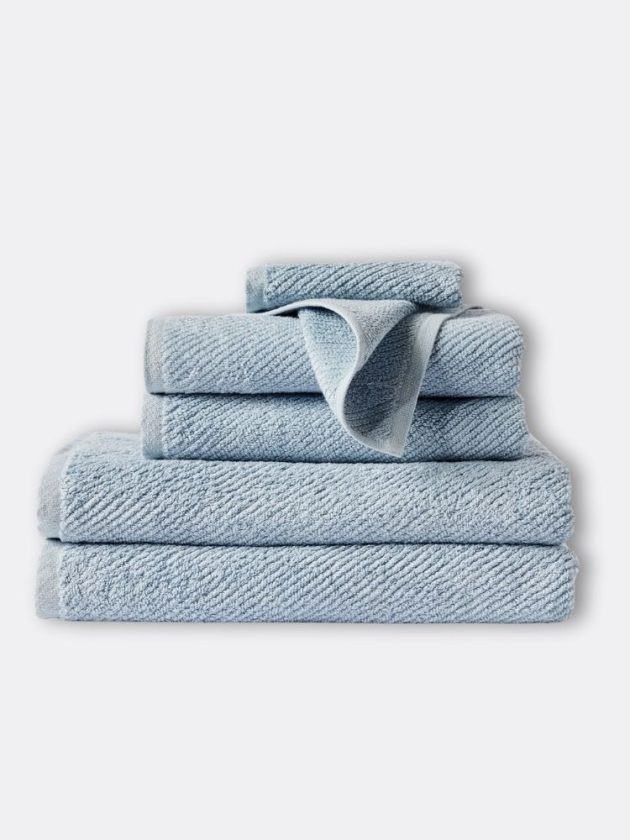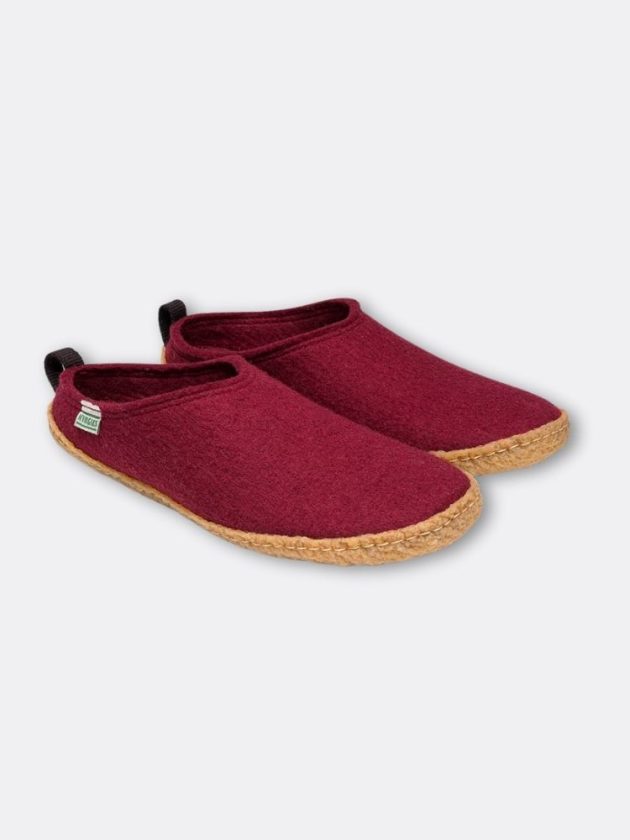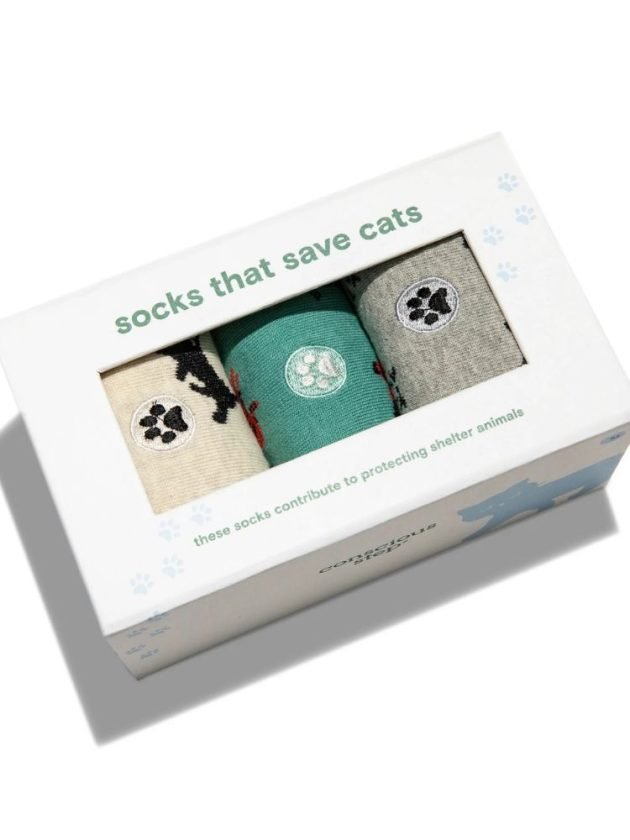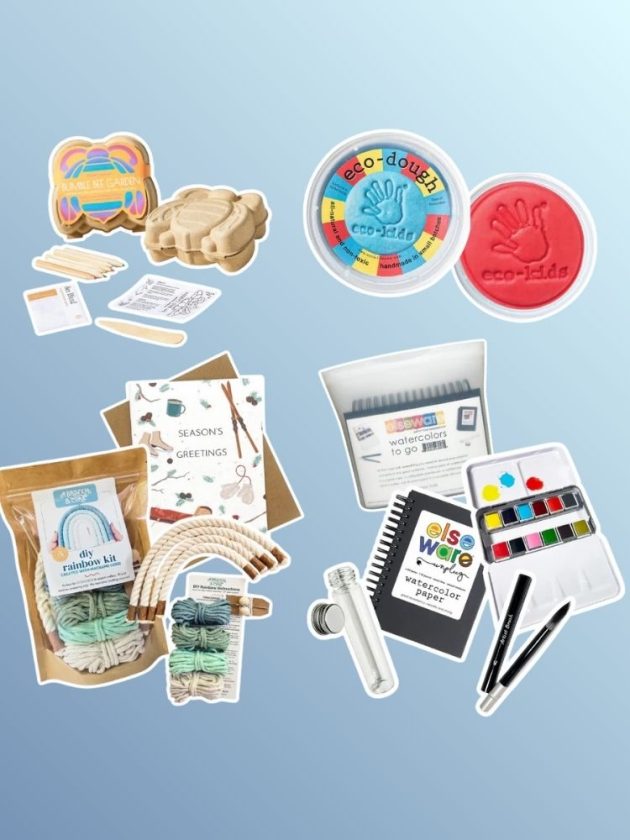Quick Key Facts
- Despite covering only around 25% of Earth’s land area, mountains host more than 85% of bird, mammal and amphibian species.
- Many of Earth’s rivers begin in mountains, and more than half of all people use freshwater from mountains every day.
- Six of the 20 plant varieties that feed most of the world’s population originate in mountains: barley, sorghum, tomatoes, apples, quinoa and potatoes.
- Mountain visits make up 15 to 20% of global tourism.
- Since 1950, mountains have been heating 25% to 50% faster than the global average.
- Even if global warming is limited to 1.5 degrees Celsius above pre-industrial levels, nearly all mountain glaciers will face considerable mass loss by 2100.
- The average Everest climber generates 18 pounds of waste, most of which stays on the mountain.
What Are Mountains and Why Should We Protect Them?
From the Alps and the Andes to Julie Andrews twirling in an alpine meadow in the opening scene of The Sound of Music, mountains have been a powerful force in human history and culture. They dominate our imaginations as they dominate our landscapes, towering over skyscrapers in cities from Tokyo to Seattle and forming islands from Hawaii to Iceland. A mountain, defined as a landmass significantly higher than its surroundings, comes in broadly four types: fold mountains, formed by the movements of tectonic plates; block mountains, created by rocks moving up and down; dome mountains, made from the movement of magma beneath the Earth’s crust and volcanoes.
While mountains are formed by geologic forces deep underground, they create space for unique ecosystems to form high above the Earth. Mountains’ harsh conditions and relative isolation have encouraged and sheltered varied biodiversity.
And what happens on mountains doesn’t stay on mountains. From crucial crops to glacial runoff, mountains have given many gifts to the human and non-human communities that live below them. Yet, society doesn’t treat mountains with the gratitude they deserve, threatening these majestic environments with the climate crisis, resource exploitation, pollution and overtourism. To preserve mountain ecosystems, it’s important for human communities to understand what mountains do for us and, in turn, what we can do for them.
What Are the Main Types of Mountain Ecosystems?
Mountain ecosystems vary wildly in climate and biodiversity. For example, mountains encompass the temperate European Alps and the Desert Mountains of Nevada to island-forming volcanoes like Hawaii’s Kīlauea and the world’s highest peaks in the Himalayas. The ecosystem changes within each individual mountain; this often depends on the altitude. For every 328 feet gained, the temperature falls by 0.9 to 1.1 Fahrenheit, and altitude conditions affect what species can survive and thrive in a particular spot. Similar plants and animals tend to thrive at similar altitudes (and latitudes moving north to south). These ecosystem bands are called life zones — below, we’ll detail out some of the most common.
Montane Forest
The first mountain life zone is the montane forest. Even if a mountain rises out of a lowland forest, the species in the montane forest tend to be distinct from those further below and will have more in common with trees that grow further north. In Europe, North America and temperate Asia, the trees in montane forests are typically conifers such as pines, mountain hemlocks and the unique larches of Washington State’s Cascades, with needles that turn yellow in the fall.
In the Southern Hemisphere’s temperate areas, montane forests are usually made up of one or two broadleaf species, such as eucalyptus in Australia, while in the tropics montane forests are usually evergreen rainforests. One unique tropical and subtropical type of montane forest is the cloud forest. These are evergreen rainforests whose moisture comes from clouds, which envelop the green in a constant mist. The clouds are first intercepted by the mountain slope and then filtered through the leaves. These forests, found in parts of Central and South America, Southeast Asia, Central and Southern Africa and Australia, are known for an abundance of plants like mosses, lichens and orchids that grow on other plants. The unique conditions that form cloud forests mean they’re home to many unique species, such as a carnivorous pitcher plant found in Borneo’s cloud forest called the Nepenthes hurrelliana.

Subalpine Zone
As altitude increases, climate conditions grow more extreme and trees have a harder time surviving. Eventually, they hit a point past which it is too cold, dry and low-oxygen for them to grow. This is called the tree line or timberline, and it typically occurs at the point on a mountain where temperatures during the warmest month average around 50 degrees Fahrenheit. The area immediately around the tree line is a transition area between tree-dominated and tree-free ecosystems. This is called the subalpine zone.
The trees that grow in the subalpine zone are often shorter than those below it. Some will grow in the shadow of rocks and won’t grow higher than the rock’s protection. Others will grow out instead of up. These low, wind-twisted trees are called krummholz, the German word for “crooked wood.” Between the krummholz are subalpine meadows where many species of wildflowers flourish, depending on the region. In temperate ecosystems, common flowers are heather, daisies, lupins and pasqueflowers.
Alpine Tundra and Grassland
Above the tree line, conditions grow even harsher, which limits what can grow. The plants that survive grow low to the ground year-round and include grasses, sedges, forbs and lichens. Grasses grow most frequently in alpine meadows, which are created when weather conditions have eroded rocks sufficiently to create soil. Alpine flowers have evolved to have hair on stems and leaves that protect them from the wind. One example is the Edelweiss, or Leontopodium nivale, which grows in the Alps and Carpatihians, a national symbol for several countries in the region. Other alpine flowers have red pigment to help turn the sun’s rays into heat or blue to protect against ultraviolet radiation, such as the Clusius’s gentian in the Swiss Alps.
Many alpine ecosystems around the world will have similar types of plants, including heather, gentians, plantains and buttercups. Tropical alpine regions in the Andes, the Himalayas, East Africa and Pacific islands feature a unique type of plant, a large herb with a rosette structure that can grow to be over 10 feet tall. WWF considers montane grasslands and shrublands to be their own biome. These ecosystems occur all over the world from the Páramo in the Northern Andes to the steppes of the Tibetan plateau. Even higher up, some mountains see ice and snow year-round, conditions that are inhospitable to most life. However, some organisms still find a way, such as ice worms and red algae in the North Cascades or the microbes that have been discovered beneath mountain glaciers.

What Are the Benefits of Mountains?
Mountains have a myriad of benefits, from housing ample biodiversity and providing freshwater to being recreational destinations where people can hike and ski.
Habitats and Biodiversity
Despite only covering around 25% of Earth’s land area, mountains are essential havens for biodiversity, hosting more than 85% of birds, mammals and amphibians and one-third of terrestrial species. They also include almost 25% of the world’s forests. The tropical Andes in South America are home to 45,000 plant species, while the mountains of New Guinea alone host 20,000 plant and animal species. Unique animals that shelter on mountains include iconic species like bighorn sheep, red pandas, orangutans, snow leopards, Rocky Mountain goats, the Himalayan tahr and the California and Andean condors.
The biodiversity importance of mountains comes in part from their elevation and their relative isolation from the landscape below. Their altitude and cooler temperatures allowed them to act as a refuge for cold-weather species as planetary temperatures warmed following the last Ice Age. In more recent history, they provide a haven for species pushed out of the lowlands by human activity. At the same time, the contained environments of mountains enable species to evolve and diverge relatively quickly, so that different but related species can survive on nearby mountain peaks, boosting overall biodiversity. Mountains can also support the biodiversity below them. For example, snowmelt from Mount Kilimanjaro waters the swamps of Amboseli National Park, which shelters 420 bird species and 50 large mammal species.
Water
Mountains are essential to the global freshwater supply, so much so that they’ve known as the “world’s water towers.” Mountains store water in glaciers, snowpacks, lakes and reservoirs that flow downhill at increased rates during warmer weather. Most of the Earth’s largest rivers begin in mountains, and more than half of all people use fresh water from mountains every day for drinking, sanitation, agriculture, electricity, industry, transportation, recreation and fisheries.
Certain ranges are especially important as regional water sources. Scientists have identified 78 mountain “water towers” that are especially vital, providing water to 1.9 billion people. The greatest number of people are dependent on the Indus river system coming out of the Himalayas in Asia. More than 200 million people in the region and 1.3 billion people downstream rely on water from the Hindu Kush-Himalayan mountain region alone, which is sometimes called the world’s “Third Pole” for its abundance of mountain glaciers. Other important “water tower” mountains are the European Alps, the U.S. Rockies and the southern Andes in South America. Cities that rely on mountain water include Tokyo, Rio de Janeiro, New York, Nairobi and Melbourne.
Food and Flowers
Because their harsher conditions put stress on plants, mountain soil is less nutrient-rich overall than lowland soil. Therefore, mountains aren’t used for agriculture on a large scale. That said, several important food crops and beloved garden flowers originated on mountains. These include six of the 20 plant varieties that feed most of the world’s population: barley, sorghum, tomatoes, apples, quinoa and potatoes. Potatoes, for example, were first domesticated in the Andes around 8,000 years ago. Gardens would also be noticeably less bright without mountains, as many popular flowers originated in mountains. More than 60% of wild tulip species evolved in the mountains of Central Asia.
Culture
Currently, between 0.3 billion and 2.3 billion people call mountains home. Communities who have lived on mountains for centuries have developed their cultures based on their alpine lifestyles.
The Sherpas live in the most mountainous part of the Tibetan and Nepalese Himalayas. They’ve become so well known for their mountaineering prowess that the term “sherpa” is now used for any mountain guide in the region, regardless of ethnicity. Switzerland’s iconic yodeling singing style originated from shepherds calling to each other across the Alps. In fact, most mountain ranges are home to Indigenous peoples and local communities who depend on them for sustenance and identity.
Many of these communities have developed unique Indigenous knowledge systems, such as languages, traditions and ways to make use of the land. Many cultures also consider certain mountains and glaciers sacred. Mount Kailas in Tibet is honored by Buddhism, Hinduism, Jainism, Sikhism and Bon. Other mountains that hold spiritual significance to different groups include Mount Everest, Mount Fuji, Mount Ararat, Mauna Kea, the Mount Olympus (of Greek mythology) and Mount Shasta, where the Winnemem Wintu people of California believe all of life bubbled up from a mountain spring.

Recreation
Mountains provide ample opportunities for recreation in nature, such as mountain and rock climbing, hiking, mountain biking, backpacking, camping, downhill and cross-country skiing, snowboarding and snowshoeing. They also host sites of cultural or historical significance, such as the Incan ruins of Machu Picchu in Peru, which draws millions of visitors annually. In fact, mountain visits make up 15 to 20% of global tourism. Mountain and snow tourism generated at least $4.9 billion in 2023, which is expected to grow to $8 billion by 2033.

Main Threats to Mountains
When you see craggy peaks towering above the lowlands or spewing ash and lava into the sky, mountains may seem invincible to the whims of humans. Yet their size and power can’t protect mountain ecosystems from the same environmental pressures that human activiy is placing on the rest of the world.
Climate Threats
Scientists have warned that climate change (driven by the burning of fossil fuels), is the greatest threat to mountain ecosystems.
Climate Shift
For every degree that lowlands warm, mountains warm on average 1.8 degrees Celsius. And since 1950, mountains have been heating 25% to 50% faster than the global average. This speed of warming can alter ecosystems faster than plants, animals and humans can adapt, increasing the risk that diseases or invasive species will rise to new mountain life zones and harm native species. The shifting of mountain life zones could threaten unique alpine species with mass extinction.
This rapid warming also threatens the snow and ice that shape alpine life, culture and recreation. One study found that the U.S. ski industry lost $5 billion between 2000 and 2019 due to a lack of snow and the cost of making artificial snow to compensate. Another calculated that 1 in 8 current ski areas wouldn’t get any natural snow cover by 2100. This would threaten local economies that depend on tourism as well as mountain biodiversity, as ski slopes are constructed in higher, more remote areas to chase the remaining snow, shrinking the undisturbed habitats home to mountain life.
Glacier Melt
Perhaps the climate mountain threat that could harm the largest amount of people is the melting of mountain glaciers. This threatens mountains’ status as the world’s water towers, putting the freshwater and energy of over a billion people at risk.
Non-polar glaciers lost around 267 metric gigatons of mass per year between 2000 and 2019 and doubled their rate of thinning during the same time period. A 2023 study found that even if warming is limited to 1.5 degrees Celsius, nearly half of all glaciers will melt by 2100. If warming is allowed to reach 2.7 degrees Celsius, 68% would melt. If it reached four degrees, 83% would disappear. Beyond the impact on mountain or mountain-reliant communities, the melting of these glaciers would also contribute to sea-level rise, pushing up water levels by just under 4 inches in the 1.5 degrees scenario and 4.5 inches in the 2.7 degrees of warming — submerging an area where more than 10 million currently live.
Mountain Disasters
Warmer temperatures and glacial melt also increase the risk of mountain disasters such as landslides, rockslides and floods. When glaciers retreat and mountain permafrost melts, this can cause flooding, as there is more water running down the mountain more quickly. It can also destabilize the ground, increasing the risk of land movements like landslides, rockslides and avalanches in warm or thick snow. The climate crisis has also increased the risk of a specific type of flood known as a glacial lake outburst flood. These floods occur when glacial meltwater pools in lakes that are then destabilized by an earthquake, rain storm or dam breach, sending massive amounts of water down the hillside. The number, volume and area of these lakes have increased by 50% since 1990, and 15 million people are now threatened by these types of floods, especially in the Himalayas and the Andes.
Other Threats
The high biodiversity of mountain ecosystems also makes them vulnerable to human threats. Because mountain species have evolved to succeed in such unique environments, they can be easily harmed if that unique ecosystem is threatened. For example, the Taita thrush is only found in the Taita hills of Kenya; it can’t survive in the drier grasslands below.
Habitat / Biodiversity Loss
Human activity can threaten mountain ecosystems directly through development, deforestation and the introduction of invasive or pest species. When a larger number of humans move up into the mountains to live or farm, this can displace native plants and animals and increase human-wildlife conflict when the wild mountain species eat crops or livestock. Poachers also target lower mountain mammals.
In the past, mountain forests haven’t experienced aggressive deforestation like lowlands have. However, this is starting to change. Between 2000 and 2018, humans cleared 78 million hectares of montane forest. The main causes of this deforestation were commercial logging, tree clearing for agriculture and wildfires. The most deforested mountain areas tended to coincide with tropical biodiversity hotspots.
One example of this trend is Southeast Asia, which is home to around half of all tropical montane forests. There, upland forest loss has accelerated in the 2010s, accounting for 42% of the region’s total as of 2019. Mountain forest loss can also increase the risk of flooding and erosion, worsening water quality and affecting native flora and fauna. Species that might need to shift their range to accommodate rising temperatures have less habitat to work with. Southeast Asia’s mountain forests are also especially adept at storing carbon compared with lowland forests, so removing them makes it harder to keep both local and global temperatures lower.
Pollution
The main sources of pollution for mountains are human activities like logging, mining, logging, agriculture, grazing and recreation, as well as the transport of smaller pollutants through the atmosphere. Air pollution from urban or industrial centers can travel to mountains, where it not only worsens air quality but also enters plant tissue, soil and water. This pollution has harmed forests in the Carpathian mountains and brought smog to Great Smoky Mountains National Park, where at one point ozone had harmed almost half of the black cherry trees and 79% of milkweed plants sampled. Microplastics have also been found high in mountain ranges, from Mount Everest to the Alps.
Overtourism
While mountain recreation can provide an economic boost to local communities and offer visitors a chance to learn about and appreciate mountains, it has a downside. Sometimes, mountain tourists are not as respectful as they should be or tours are not designed to account for the impact of visitors to vulnerable ecosystems.
Increased visitors can bring more construction of tourist infrastructure like ski lodges or cabins, increased vehicle traffic that emits air pollution, noise and light pollution that disturbs animals, problems with proper waste disposal, disturbance of mountain wildlife and negative encounters with local communities.
One example of overtourism gone wrong is Mount Everest, the world’s tallest mountain from sea level and a major climbing destination. So much waste has accumulated on Everest that it has been called the “world’s highest garbage dump.” Around 100,000 people visit Everest’s Sagarmatha National Park every year, and around 600 try to summit the mountain every climbing season. The average climber generates 18 pounds of waste, most of which stays on the mountain. In addition to larger debris like abandoned tents, oxygen canisters and even dead bodies, climbers also leave behind human waste. With increased melt and runoff from climate change, some of this waste has begun to flow into the local water supply, putting people downstream at risk from dangerous diseases like cholera and hepatitis A.
How to Protect Mountains
Humans have the power to harm mountain ecosystems, but we also have the power to protect them. The decisions we make as citizens, consumers, policymakers and tourists can have a positive impact on these magical environments.
Protecting Mountains From Climate Change
As previously discussed, climate change is one of the biggest threats to mountains and glaciers.
Mitigation
The most important way to protect mountains from the climate crisis is the same as the most important way to protect the entire Earth: We must phase out fossil fuels as rapidly as possible. This means both preventing development of new fossil fuel deposits, replacing oil, gas and coal with renewable sources of energy like wind and solar and transitioning from gas-powered cars to electric vehicles while improving public transportation options. In its most recent assessment, the Intergovernmental Panel on Climate Change recommends nearly halving greenhouse gas emissions by 2030 and reaching net zero by 2050 in order to limit global warming to 1.5 degrees Celsius above pre-industrial levels.
The second main driver of the climate crisis is the destruction of natural carbon sinks through deforestation and other forms of land-use change. This means that protecting mountain habitats has a double benefit for mountains: It preserves an individual ecosystem from immediate disturbance and it lowers the impacts of climate change on all mountains.
Adaptation
Even if world leaders succeed in winding down the use of fossil fuels and limiting global warming to 1.5 degrees Celsius of warming — something that seems increasingly unlikely — mountain communities will need to adjust to the climate impacts they’re already experiencing and the ones that are projected to continue, such as the loss of nearly half of mountain glaciers by 2100.
Some are already taking action. Resort employees on Switzerland’s Mount Titlis have started covering the mountain’s glacier with protective polyester fleece during the summer. Venezuela is restoring wetlands to deal with water shortages. And in the Hindu Kush Himalaya region of Pakistan, communities are working to establish an early-warning system for more frequent floods. The Adaptation at Altitude program seeks to help mountain communities become more resilient to climate change by researching effective solutions and sharing them across alpine regions.
Unfortunately, the IPCC found that current mountain adaptations are not fast, expansive or substantial enough to respond to a high level of climate risks. Policymakers can boost the adaptive ambition of mountain regions by fostering international collaboration. They can developing holistic projects that consider all the needs of mountain communities, support more research and data gathering and making sure mountain communities have the funds they need.
Protecting Mountains From Other Threats
Beyond climate change, there are other issues that can harm mountains.
Exploitation and Deforestation
Governments, corporations and individuals can take steps to protect mountain ecosystems from exploitation. Research into mountain deforestation found that deforestation was less likely to occur in protected areas, so conserving mountain ecosystems — and safeguarding the land rights of any Indigenous communities that steward them — is one immediate way to prevent further habitat and biodiversity loss.
Scientists say these protected areas should be large enough to give species space to move. Governments can also regulate extractive industries and support ecological restoration and agroforestry efforts. They can plan dams and other infrastructure in such a way that won’t disturb waterflow or wildlife. Restoration or reforestation projects should replant a variety of native species rather than single tree species in monoculture plantations.The international community could also negotiate treaties to specifically protect mountain ecosystems.
Tourism companies can follow best-practices to make sure that they are being mindful of the limits of mountain ecosystems and the rights of local communities. Larger food or lumber corporations can make sure that their supply chains are deforestation-free. Consumers can choose to support companies that respect mountain ecosystems and avoid those that don’t.
Responsible Climbing and Tourism
One of the most important ways individuals can protect mountains is to behave responsibly when they visit them. This means following the principle of “leave no trace” and taking anything you bring to a mountain with you when you leave. Other things you can do are travel during off-peak season or to less popular destinations, rely on non-fossil fuel transport when possible, support sustainable tourism companies, be respectful of Indigenous or local communities you encounter, buy second-hand gear or share equipment with others and spread awareness of these best practices to other hikers. If you are lucky enough to trek Mount Everest, make sure to offset your climb by bringing your waste back down with you.
Takeaway
“The mountains are issuing a distress call,” said United Nations Secretary-General António Guterres at a 2023 United Nations climate change conference.
That distress call comes in the form of melting glaciers, sudden floods, snowless ski slopes and falling forests. If human societies choose to ignore that call, they could usher in a future in which mountains are unrecognizable, as glaciers, snowpacks and entire niches of species disappear. However, if we can learn to work with mountains to stop exploitation, the outlook for mountains might be brighter.

The post What Mountains Provide and Why They Need Protection appeared first on EcoWatch.
https://www.ecowatch.com/mountains-protection-conservation-ecowatch.html
Green Living
21 Eco-Friendly & Ethical Gift Ideas For Everyone on Your List
From gorgeous home decor and indulgent organic beauty to artisanal quality accessories and thoughtfully-crafted gift sets, you’re sure to have a successful (and stress-free) gift-giving experience for everyone on your list through our curation of conscious yet covetable ethical gifts.
We know that finding that perfect present for every individual in your life can be an overwhelming task, especially if you’re a conscious-minded shopper. To put you out of your holiday-gifting-induced anxiety, we’ve put together a comprehensive, sure-fire assortment of ethical gift ideas for you.
So, go ahead and secure your favorite spot on the couch to get ready to check off your gift giving list, because this ethical gift guide will not disappoint. With something for every special someone on your list — even the hard-to-shop-for folks in your life — we’re making it possible to get much of your seasonal shopping accomplished in one place.
Rest assured, you’ll find something delightful for yourself too — maybe a set of gram-worthy pastel cookware? Think of it as an incentive to get you through the holiday hustle.
Now, don’t let us keep you…get ready to have your gift-wrapped ducks in a row with our sustainable gift ideas ahead. The perfect gifts for socially conscious and environmentally aware loved ones in your life!
Please note that this guide includes CL&S partners and affiliate links. As always, brands meet strict criteria for sustainability and are brands we love — and that we think you’ll love too!
1. Organic Cotton Clothing by Passion Lilie
Why we love it: Fair Trade, Organic Cotton, Pays Living Wages, Woman-Owned | Price: $68+
Passion Lilie offers a range of elevated clothing made from sumptuous organic cotton fabric that’ll keep your loved ones looking stylish and feel all snuggled up come winter. From handwoven shirts for men to figure-flattering hand-printed dresses for women, the brand’s dedication to highlighting artisanal craft reverberates throughout its collection. We recommend bookmarking their crimson hand-printed snowflake dress for the women who’ll appreciate a holiday-themed gift. You could also complement the dress with a dainty little stocking stuffer like one of the tea towels or napkins from their collection of kitchen linens in bright and charming prints.
2. Handcrafted Teak Furniture by MasayaCo
Why we love it: Reforested Teak Wood, FSC® Certified, Vertically-Integrated Supply Chain, Reforestation Program | Price: $55+
Offering artisanal teak furniture that’ll add a touch of understated elegance to any home, Masaya & Co. has curated a range of side tables and stools under $350 for the discerning decor enthusiasts. Handcrafted from durable and naturally water-resistant teak wood, their slatted top Japanese-inspired Zapatera stool has garnered raving reviews about just how well it holds up as an in-shower stool. The brand operates on a self-sustaining model by growing its own FSC® Certified teak trees on reforested land in Nicaragua.
3. Organic Cotton Kidswear by Mightly
Why we love it: GOTS Certified, Fair Trade Certified , Woman-Owned | Price: $18+
, Woman-Owned | Price: $18+
For the little ones you know and adore, Mightly has a range of organic cotton kidswear that’ll make for a great gift this festive season. Think dresses that are big on twirl factor, cozy pajamas with prints that pop, and unisex hoodies with snap front pockets to store all their tiny treasures. Every piece is made with GOTS certified organic cotton, which explicitly prohibits the use of toxic chemicals in the finished product, making it ideal for kids with sensitive skin. And if that wasn’t reassuring enough, the pieces are also thoughtfully designed to include details like tag-free labels, easy-to-wear fits, and playful designs that make it fun yet functional.
4. Non-Toxic Loungewear by MATE the Label
Why we love it: Plant-Based Materials, B Corp, Woman-Owned, GOTS Certified Fabrics | Price: $48+
With laidback loungewear that strikes the perfect balance between fashionable and effortless, MATE the Label boasts of cozy threads you’d want in your wardrobe come winter. Stylish options are just a bonus, the brand is committed to keeping its clothes free of toxic chemicals and harmful dyes while adhering to self-imposed protocols to ensure the factories it works with are safe, fair, and compliant with California labor laws. They’ve also made choosing a gift a lot easier with their curated holiday guide that’s categorized by budget and persona.
5. Refillable Hand Soaps by Blueland
Why we love it: WOC-owned, Plastic-free, Refillable, Natural Ingredients | Price: $12+
A conscious gift that is both practical and plastic-free, Blueland has floral-scented hand soap tablet refills can be paired with their glass dispenser bottle that’ll stay in use on the bathroom countertop for a long time. The process of using these is as easy as filling up the bottle with warm water, dropping in a soap tablet, and pumping it to find hydrating, foamy goodness at your fingertips.
Blueland’s Garden Blooms Variety Pack soap tablets feature plant-based and planet-friendly ingredients in scents inspired by the fragrances found in your own backyard.
6. Premium Loose Leaf Tea Collection by Rishi Tea & Botanicals
Why we love it: USDA Certified Organic, Ethically Sourced, Agrochemical-free | Price: $67
For the ones who cherish daily indulgences like a warm cup of tea, this gift set will send them on a sensory journey through global tea traditions. This gift set features 12 curated blends that range from delicate green teas to robust black teas, refreshing herbals, and fragrant oolongs. Don’t just take our word for it, one reviewer claims the set was “very luxurious” and found the tea selection to be “amazing and delicious”. The brand supports growers through ethical and direct sourcing that pays 5-10x the commodity prices to incentivize their efforts on sustainable harvests of organic quality.
7. Bonfire Reusable Candle by Mimi & August
Why we love it: Reusable, Soy Wax, Non-toxic Fragrance | Price: $38 CAD
Hunting for the perfect holiday gift to present a great hostess? Snatch up this fragrant little candle to light up their space with an inviting aroma.
Evoking the smell of a nostalgic campfire with notes of cedar, vanilla, and smoke, this hand-poured soy wax candle comes in reusable cups of different sizes that can be filled with some hot cocoa and marshmallows once used up.
8. Jewel Tone Birth Month Dish on Uncommon Goods
Why we love it: Certified B Corporation, Philanthropic, Reforestation Program, Pays Fair Wages | Price: $25
Glazed in birthstone colors, this jewelry dish is the prettiest little ethical gift that’ll adorn any dressing table. They feature crackled glass centers resembling crystalline geode slices that give them a distinctive appearance. Simply select the birth month to get a unique jewelry dish that’s just as special as the person you intend to give it to.
Crafted by a trained female potter, you can find more such unique handmade gifts on Uncommon Goods where independent designers are celebrated for their work.
9. Sake Body Lotion by cocokind
Why we love it: WOC-owned, Certified Organic Ingredients, Philanthropic, Life Cycle Transparency | Price: $23
Crafted with Japanese fermented rice wine that’s rich in smoothing enzymes and microbiome-friendly prebiotic sugars, the sake body lotion by cocokind has a reviewer describing it as “the only body moisturizer” where they’ve “used the entire bottle.”
Available in an upcycled plastic bottle that’s fully recyclable, the sake extract they use is created by fermenting rice kernels and is completely alcohol-free. It also contains a blend of sunflower seed oil and shea butter that’ll leave skin feeling supple and soft.
10. Organic Towels by COYUCHI
Why we love it: Plant-Based Materials, Fair Trade Certified Factories, GOTS Certified Fabrics | Price: $18+
Factories, GOTS Certified Fabrics | Price: $18+
Know someone who loves a good towel lounge after a shower? We reckon these indulgent organic towels might just motivate them to stretch those sessions even further. Offering an array of matching organic cotton towel sets in weaves and textures that look like they’ll wrap you up in luxury, these towels also come in lovely earthy tones and size options, in case you aren’t keen on getting the entire bundle. They’ve even got a set of plush cotton robes that’ll offer them enough reason to not leave the house and disappear into it like a second skin.
11. Handcrafted Wool Slippers by Kyrgies
Why we love it: OEKO-TEX® STANDARD 100 Certified, Biodegradable, Plastic-Free, Low-Waste Practices, Woman-Led Factories | Price: $89+
Let your loved ones kick up their feet in comfort come winter with a little help from Kyrgies wool slippers. Kyrgies’ cozy slip-on offerings are handcrafted in Kyrgyzstan, where local sheep are known for producing wool with long fibers that are ideal for felting in a mulesing-free process. The wool is felted by a women-led factory using centuries-old techniques, ensuring leftover off-cuts are reused as extra padding in their slippers or repurposed as natural insulation for buildings.
12. Weighted Blanket by Bearaby
Why we love it: OEKO-TEX® Standard 100 Certified, Global Recycled Standard Certified, GOTS Certified, Reforestation Program | Price: $199+
For the busy bees who could use some serious R&R, this weighted blanket will help them hit the hay faster. Known for aiding with naturally deeper sleep cycles, Bearaby’s weighted blankets are crafted using organic cotton that’s free of fillers and owes its weight to the chunky knit fabric alone.
Not just for cozy winters, these machine-washable cotton blankets are knitted for maximum breathability making them perfect for all seasons.
13. Life Designer Journal by Intelligent Change
Why we love it: Philanthropic, Natural Materials, Recycled, Compostable, FSC® Certified Paper | Price: $39
For the ones who have a special spot for aesthetic stationery, this journal is a gift they won’t judge solely by its pretty cover.
Filled with mindful prompts centered around five essential pillars that guide you through a self-reflective journey to help manifest your best self, this journal will be a portable therapist and best friend bound between the pages that might just have you picking up a copy for yourself as well.
14. Tree of Life Cork Yoga Mat by Scoria
Why we love it: Woman-owned, Natural Materials, Philanthropic | Price: $105
Offering the ultimate incentive for perfecting the warrior two pose, this alignment cork yoga mat features a methodical tree of life print that isn’t just aesthetically appealing but also helps properly align postures with a line across the middle. Talk about combining style and function!
Crafted with a sustainably harvested cork surface that’s backed by natural rubber, this anti-slip mat comes with a handy cotton mat carry strap.
15. Shallow Dinner Set by East Fork
Why we love it: Certified B Corporation, Philanthropic, Pay Living Wages | Price: $156
For the friend who is always posting perfectly plated stories of what they’ve cooked, this set will be a highly welcome addition to their dinnerware collection.
Including two bowls and three plates in different sizes, this handcrafted ceramic shallow dinner set comes in many hues, but we highly recommend the black set for its understated elegance and the way it’ll make a rainbow salad or smoothie bowl pop.
East Fork’s pottery glazes are completely food-safe and free of lead so they won’t have to worry about heavy metals leaching into meals.
16. Safe & Snuggly Baby Box by The Filtery
Why we love it: Woman-Owned, Non-Toxic, Plastic-Free | Price: $125
For the mindful new parent who’d appreciate a practical gift for their little one, this box is a thoughtful curation of non-toxic baby essentials like an organic diaper balm, plastic-free feeding bottle, organic cotton blanket with pacifier, silicone bath toys, and fragrance-free body wash, along with a wonderful plantable holiday card that’ll sprout up like their child.
The best part? It’ll arrive in a ready-to-gift box that won’t require any additional gift-wrapping with the option to add a personalized note at checkout that’ll be hand-written for the recipient.
Use code CONSCIOUSSTYLE at checkout for 10% off!
17. Sock Gift Boxes that Give Back by Conscious Step
Why we love it: GOTS Certified, Fair Trade Certified , Philanthropic | Price: $35+
, Philanthropic | Price: $35+
Colorful socks with fun designs that don’t just look good but also give back, these ethical gift sets will easily be one of the most meaningful presents you’ll give your loved ones. These soft organic cotton sock sets are created in collaboration with creative artists to help connect customers with world-changing nonprofits through causes they care about.
From socks that support mental health to ones that protect the ocean, dogs, cats, and beyond, you’ll be sure to find a sock set with a purpose.
18. Friendship Bracelets by Monica Vinader
Why we love it: Recycled Metals, Traceable Supply Chain, Recycling Program, Philanthropic | Price: $130+
The adult equivalent of a friendship bracelet, these fine baubles will be adorned and cherished by your BFF for years to come.
Monica Vinader’s collection of friendship bracelets ranges from fine 18k gold vermeil versions to nylon cord styles to maintain that old-school charm.
What’s more? You can add a complimentary engraving with either a motif or personalized text to make it just as meaningful as the bracelets you handmade in high school.
19. Piccolo Zipper Card Wallet by HYER GOODS
Why we love it: Deadstock and Recycled Materials, Woman-Owned, Reforestation Program | Price: $125
Chic and petite, this luxe zip wallet will quickly become the new go-to essential they won’t leave the house without. With five exterior card slots and a lined cash compartment with an extra card slot that comes with a zip-around closure, this minimal wallet is surprisingly functional for daily use.
We love the fact that it’s made using recycled deadstock materials and is compact enough to fit into tiny clutch bags. The brand sources its leather from local leftovers, making sure every recipient receives something unique.
20. Throw Pillows by Studio Variously
Why we love it: WOC-owned, Natural Materials, Natural Dyes, Ethically Made | Price: $74+
On the lookout for ethical gift ideas that’ll add an inviting hygge vibe to any space? Then look no further than these textural throw pillows by Studio Variously.
Available in earthy hues that are finished with intricate patterns and embroidery, these pillows are handcrafted using natural materials that fit in well in just about any interior setting.
21. The Little Artist Gift Box by The Filtery
Why we love it: Woman-Owned, Non-Toxic, Plastic-Free | Price: $150
A gift box that every kid — and parent! — will adore receiving, this curation of plastic-free art supplies is a great way for children to develop fine motor skills and serves as a fruitful distraction from screen-time.
Packed with a watercolor painting kit, plant-based play-dough, macramé kit, garden activity kit, and a plantable holiday card for the budding little green thumb, you can confidently click “add to cart” knowing the box will arrive gift-wrapped and ready to stuff under the Christmas tree.
Use code CONSCIOUSSTYLE at checkout for 10% off!
And one last bonus sustainable gift idea for the person on your list that doesn’t want more stuff:
Audiobook Gift Membership on Libro.fm
Why we love it: Supports local and independent bookstores | Price: $31+
Consider this the perfect gift for the bookworm in your life who enjoys a great read but has lately been having a tough time getting through their ever-increasing to-be-read pile.
We love the fact that Libro.fm offers a range of credit bundles to choose from so that your gift recipient can have their pick of the lot while supporting local bookstores through your purchase.
 For More Slow Fashion Content:
For More Slow Fashion Content:
About The Author:

Jharna Pariani is a fashion writer and creative strategist whose work is rooted in honesty and deep observation of the world around her. When she isn’t busy penning down her thoughts, she moonlights as a video editor creating fashion and food reels on Instagram for several brands and influencers
You Might Also Want to Check Out:
The Best Affordable Eco-Friendly Stocking Fillers the Family Will Love
The Ultimate Guide to Experience Gifts For the Whole Fam
The post 21 Eco-Friendly & Ethical Gift Ideas For Everyone on Your List appeared first on .
21 Eco-Friendly & Ethical Gift Ideas For Everyone on Your List
Green Living
6 Best Non Toxic Diapers For Babies
Last Updated on October 15, 2025
Did you know the average newborn goes through 10-12 diapers per day? That’s a lot of waste – and a lot of time spent in diapers.
Most babies have more sensitive skin than adults, as their skin hasn’t fully developed yet. The protective hydrolipidic film is still very thin, which makes infant skin more vulnerable to harsh external factors.

Some of the links in this post are affiliate links; for more information please see my disclosure policy.
Those external factors include diapers. Babies spend a lot of time getting in (and out) of them. So it’s important to choose non toxic diapers that are gentle on both skin and planet. Here are the best non toxic diapers on the market.
which diapers are the least toxic?
The diapers that are least toxic include ones made from plant-based or cotton materials. Look for brands that omit harsh chemicals like chlorine, phthalates, and PFAs.
Many diaper components are made up of plastic, which is hard to avoid in the name of efficiency.
That being said, it’s best to choose diapers from brands that minimize the amount of plastic in their products. Plastic materials can emit VOCs known to harm health.
Here are some general guidelines to adhere to when choosing diapers:
- Choose diapers that disclose the ingredients (some don’t!). Avoid anything with fragrance, lotion, or other skin-conditioning adhesives.
- Look for brands that minimize the amount of plastic in their products.
- Consider cloth diapers, ideally made from organic cotton.
- Opt for brands that use unbleached pulp or pulp bleached without chlorine
- Try to choose plain, undyed diapers with minimal designs (dyes can be contaminated with toxic heavy metals).
- Check for certifications like Forest Stewardship Council or EWG certified.

is Huggies or Pampers less toxic?
In terms of being less toxic, Huggies has stated all of their diapers are free of fragrances, phthalates, parabens, and elemental chlorine. They’ve also partnered with Terracycle to offer plastic film recycling options.
Pampers diapers are made without parabens, natural rubber latex and elemental chlorine. But only their Pure diapers are made without fragrance (and many mothers online have complained of Pampers’ strong scent).
However, Pampers’ factories are zero manufacturing waste to landfill and they use FSC certified wood pulp.
Both brands list their ingredients on their websites, so definitely read them for yourself before making a purchase. Just be mindful both brands also use colorants and printing inks to make designs and/or color change technology.
which diaper brands are safe for babies?
The diaper brands safe for babies are listed below. There’s a mix of disposable and cloth diapers, so there’s something for everyone.
However, be mindful that every baby is different and what works for one, doesn’t always work for another. For example, certain brands may fit your baby like a glove, whereas others may be too big: It’s all about experimenting and finding what works for your baby.
You can use this list as a starting point to help you choose a better, safer choice for your child. None of the brands listed here use fragrance, parabens, or other harsh chemicals.
I’ve gone ahead and highlighted some of my favorite features of each brand, but it isn’t an exhaustive list. Be sure to check out their websites for more information.
Also, if you cloth diaper, don’t forget to consider eco-friendly baby detergent brands because you’ll be doing a bit more laundry!

1. healthy baby
- Offers disposable and cloth diapering options
- Six sizes, not including newborn (N or N/1)
- Plant-based materials including organic cotton + FSC certified pulp
- 12 hour leak protection
- No chemical wetness indicator
- EWG certified
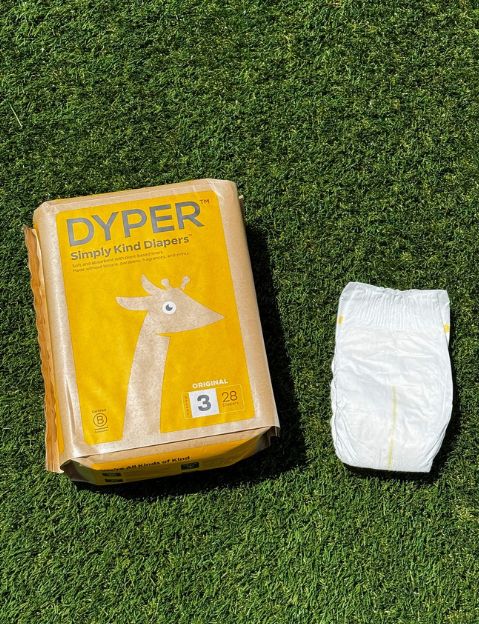
2. dyper
- Disposable diapers
- Six sizes, not including newborn (NB)
- Plant-based materials, including FSC-certified pulp
- 12-hour leak protection
- No inks, prints or dyes
- Offers REDYPER service to compost diapers through weekly pickup
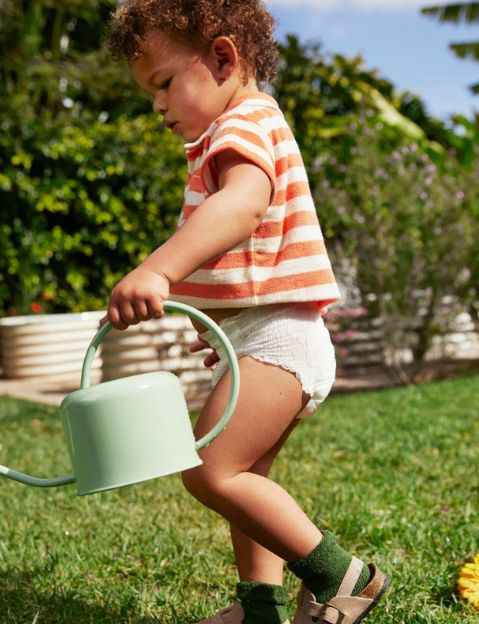
3. coterie
- Disposable diapers
- Seven sizes, not including newborn (N or N+1)
- 25% plant-based, made with wood pulp from sustainably manages forests
- 12-hour leak protection
- Wetness indicator
- Cruelty-free
- OEKO-TEX STANDARD 100 Certified

4. esembly baby
- Cloth diapers
- Two sizes, based on pounds
- Made of organic cotton + upcycled TPU
- Recommended to change an awake baby every 2-3 hours
- Wet bags sold separately to hold dirty diapers while out
- Pre-loved options to buy and sell available

5. terra
- Disposable diapers
- Six sizes
- 85% plant-based, including FSC-certified pulp
- 12-hour leak-proof protection
- Plant-based wetness indicator
- Ink on product + packaging is food grade
- Packaging is made from recyclable kraft paper + rice

6. freestyle
- Disposable diapers
- Six sizes
- 7-layer protection for 14x better absorption
- Delivered in 1 month long supplies
- FSC certified pulp
- EWG verified
Which of these sustainable diaper options would you choose? Let me know in the comments!
The post 6 Best Non Toxic Diapers For Babies appeared first on Going Zero Waste.
Green Living
The Many Layers of Personal Style
Personal style is a dance between dualities: fashion as art and fashion as function; clothing as self-expression and clothing for our circumstances.
Style is a medium for communication and self-expression, yes. But it’s also shaped by the environments and requirements around us, from workplace dress codes to city cultures, climates, and specific occassions.
In last Saturday’s workshop, where we talked about how to remix what you already have in your closet, attendees shared a common challenge:
How do you balance your personal style expression while dressing for the various situations and environments we operate in?
“I’ve found above all else my style is highly influenced by my environment (my job, my city etc.)—sometimes it becomes about ‘fitting in’ and losing individuality”
“I find I’m too led by my day-to-day lifestyle. I WFH and so often I just don’t get dressed at all.”
“There are too many applications: workout, work, at home, formal occasion.”
Style as Identity vs. Style as Communication
It’s no wonder style and getting dressed can feel so confusing.
In the personal style world, we learn to dress for who we are on the inside. And then we see the style rules in fashion media: here’s how to dress for this season, this dress code, this city.
And in our real lives, we have real dress codes we might have to follow, whether for a workplace or a wedding.
But what if all those sides conflict?
- If my style words are “casual” or “sporty” but I’m in a workplace 40+ hours a week that requires business formal, where does that leave my personal style?
- If I love vibrant and artsy looks, but I live in a city full of neutrals, what do I wear?
It’s no surprise it feels… complicated.
Here’s my take.
We’re Not One-Dimensional — Neither is Our Style
Sometimes I want to disconnect and live in cottage in the mountains, surrounded by more trees than people. Other days I dream of having an apartment in the center of Paris where I see more people in a day than live in my hometown.
I’m light, joyful, maybe even quirky with friends. I’m ambitious, intentional, perhaps more serious in work. There are times I feel it’s best to soften and let it go; other times it feels most aligned to be unapologetically outspoken.
We are human. We’re social creatures. We’re complex and full of contradictions.
Social media has trained us to fit people into neat boxes because “niche” is what performs in the algorithm.
In real life, though, our “authentic” selves aren’t so one-dimensional.
I’m not speaking to new networking contacts the same exact way I talk to my best friend I’ve known for years. That doesn’t mean I’m pretending to be someone else. It just means I’m showing up a bit differently depending on the context.
Similarly, our personal style doesn’t have to be expressed in one singular way.
That’s what’s beautiful about fashion! We have the opportunity to express ourselves a bit differently each and every time we get dressed.
What we wear might ebb and flow with a situation, the season, or our mood. There are common threads, but differentiators too.
Three distinctly different looks can all be authentic.
For me, personal style isn’t about being setting such rigid parameters that we can no longer embrace our multi-dimensional nature.
And there’s undoubtedly the layers of privilege at work here too. Is it safe to dress in alignment with your true identity in that particular situation? Will you be taken seriously? Could there be repercussions?
There’s a lot to untangle when it comes to what we wear.
Making Our Multi-Dimensional Style Practical
As I shared in last week’s workshops, style is many layers. The four I see it through are the vibe, the shapes, the colors & textures, and our lifestyle & values.

The aesthetic reflects your vibe, mood or style adjectives.
- For example, my vibe or adjectives are feminine, structured, grounded.
The shapes are the fits, silhouettes, and proportions you love.
- I often wear outfits with a straight silhouette or tailored fit balanced with a relaxed, flowy, or drapey element.
Colors & textures include your preferred palettes, fabrics, and the way materials feel.
- I prefer wearing natural fibers when possible. I like gold jewelry, and I feel more aligned in lower contrast looks. Lighter colors for day. Sometimes darker for evening or certain events.
The lifestyle & values element is the consideration of your actual day-to-day. What situations and environments are you dressing for? What is important to you?
- I work from home so comfort is key most of the time. I value slow fashion practices — rewearing, repairing, and supporting circular practices and sustainably-minded brands.
Once you understand these layers of your style, the next step is figuring out how to apply them in real-life situations.
Applying Your Style to the Situation
In last week’s workshops, I talked about the role of outfit templates here for various situations. What is the foundational blueprint of what you might wear to your office, working from home, in a school setting, at home, running errands, and so on?
There are opportunities to bring in the layers of your personal style in these various situations, but it does require some intentionally on the outset. Otherwise, it’s easy to fall into our old patterns or copy what others around us wear. (Even subconsciously, as fashion psychologist Shakaila Forbes-Bell has shared!)

Here’s one of my work-from-home outfit templates that balances style and situational needs:
- Blouse with feminine detail: I start with the top for Zoom calls!
- Straight-leg bottoms: this could be jeans, colorful pants, or a column skirt
- Slim shoes: the general “slim” descriptor makes it versatile across seasons
- Structured bag: an option to add polish when coworking at a café
By thinking in these various layers (vibe, shapes, colors & textures, and lifestyle & values) you can build outfits that feel authentic to you while fitting the constraints of the external situation.
What About One-Off Unique Situations?
Like this Wednesday evening, I spoke on a “Sustainable Fashion in Action” panel with Chicago Climate Connect during Sustainable Fashion Week Chicago. But the panel was also taking place at the Patagonia x Worn Wear store.
So the vibe was professional meets fashion, but also kinda casual?! And we are still in the Midwest here. I have to say, this one wasn’t easy.
But here’s the step-by-step thought process that helped me balance my style, function, and a unique-to-me context.

- I picked a foundational piece: My navy wide-leg trousers were business casual without being too formal and were practical for train travel.
- And functional accessories:My old Coach bag fits everything and my chunky Veja sneakers matched the vibe I was going for so those were the picks.
- Then a piece that brought it all together:At this point I was mixing high-contrast colors (white with navy & black) and different vibes (trousers vs. sneakers). I felt like I needed a bridge for the outfit, and this navy-striped vest tied it all together.
- Finally, some final touches: Gold jewelry made the look feel more “me”, while this cap from Abbie at The Filtery made it all feel effortless.
In the end, this outfit took a lot longer to create than a typical look.
It took longer to create than my usual outfits, but it felt just right. The combination was practical, suited my style, fit the vibe of the panel, and aligned with the weather.

This panel outfit reminded me that style is what we wear to express ourselves, but it’s also a tool to help us navigate our lives. By thinking through these layers of personal style (vibe, shapes, colors, textures, and lifestyle needs) we can balance showing up authentically while honoring the nuances or navigating the constraints of a situation.
For me, that’s the real power of personal style.
One single outfit can’t tell the whole story of who we are. But personal style can be flexible, functional, and expressive of the many sides of our multi-dimensional nature.
So lately, more than asking “does this outfit perfectly express my full self?” I’ve been finding myself asking:
“Does this outfit help me show up in the way I want to? Does it say what I want it to say in this particular moment?“
The post The Many Layers of Personal Style appeared first on .
-
Climate Change2 years ago
Spanish-language misinformation on renewable energy spreads online, report shows
-
Climate Change3 months ago
Guest post: Why China is still building new coal – and when it might stop
-
Greenhouse Gases3 months ago
Guest post: Why China is still building new coal – and when it might stop
-
Climate Change Videos2 years ago
The toxic gas flares fuelling Nigeria’s climate change – BBC News
-

 Greenhouse Gases1 year ago
Greenhouse Gases1 year ago嘉宾来稿:满足中国增长的用电需求 光伏加储能“比新建煤电更实惠”
-

 Climate Change1 year ago
Climate Change1 year ago嘉宾来稿:满足中国增长的用电需求 光伏加储能“比新建煤电更实惠”
-

 Carbon Footprint2 years ago
Carbon Footprint2 years agoUS SEC’s Climate Disclosure Rules Spur Renewed Interest in Carbon Credits
-
Renewable Energy4 months ago
US Grid Strain, Possible Allete Sale


